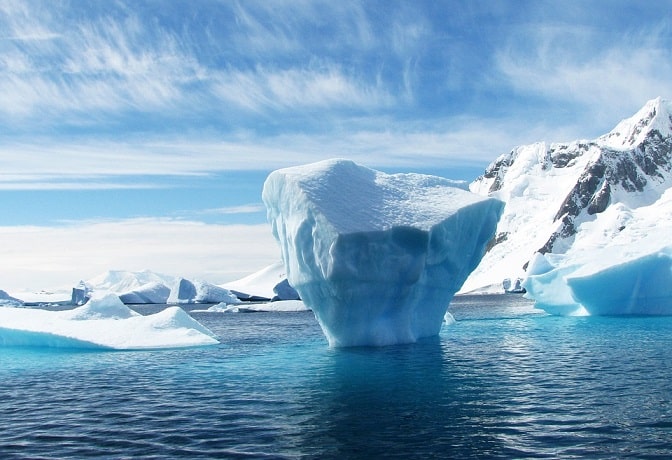According to scientists at NASA and the NASA-supported National Snow and Ice Data Center (NSIDC) in Boulder, Colorado, Arctic sea ice has reached a record low wintertime maximum extent on 7th March, 2017. On the opposite side of the planet the sea ice around Antarctica hit its lowest extent ever recorded by satellites at the end of summer in the Southern Hemisphere on 3rd March, 2017.
Satellites started continuously measuring sea ice in 1979, and on 13th, 2017, the combined Arctic and Antarctic sea ice numbers were at their lowest point since recording had begun. Total polar sea ice covered 16.21 million square kilometres less than the average global minimum extent for 1981-2010, which effectively means that a massive chunk of ice the size of Mexico had just disappeared.
According to Walt Meier, a sea ice scientist at NASA’s Goddard Space Flight Center in Greenbelt, Maryland: We started from a low September minimum extent. There was a lot of open ocean water and we saw periods of very slow ice growth in late October and into November, because the water had a lot of accumulated heat that had to be dissipated before ice could grow. The ice formation got a late start and everything lagged behind – it was hard for the sea ice cover to catch up.
The Arctic’s sea ice maximum extent has dropped by an average of 2.8 percent per decade since 1979, but this latest loss is almost five times larger, at 13.5% per decade. The sea ice cap is also thinning and becoming more vulnerable to the action of ocean waters, winds and warmer temperatures.
Daily Antarctic sea ice extent has continuously been at its lowest levels in the satellite record since November. This record low comes a mere two years after several monthly record high sea ice extents in Antarctica and decades of moderate sea ice growth.
The sea ice at both Poles shrinks in a seasonal cycle then grows again until it reaches its yearly maximum extent, but a combination of winds unfavourable to ice expansion, warmer-than-average temperatures and a series of storms halted sea ice growth in the Arctic.
Get plumbed water coolers and watercoolers from Living-Water.






